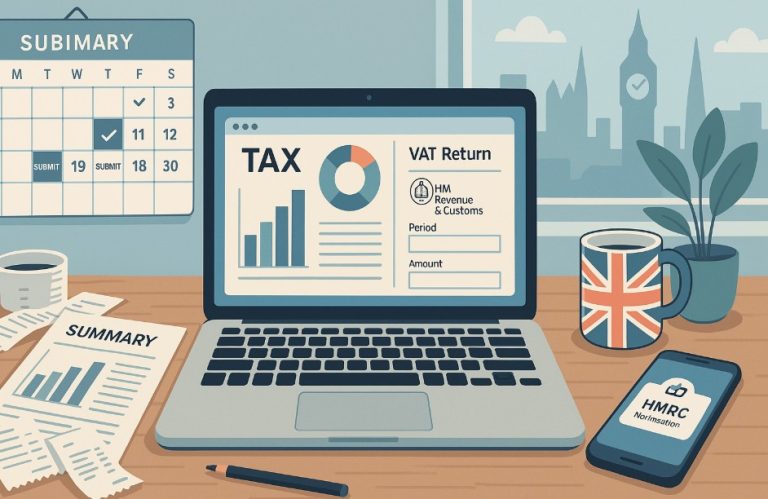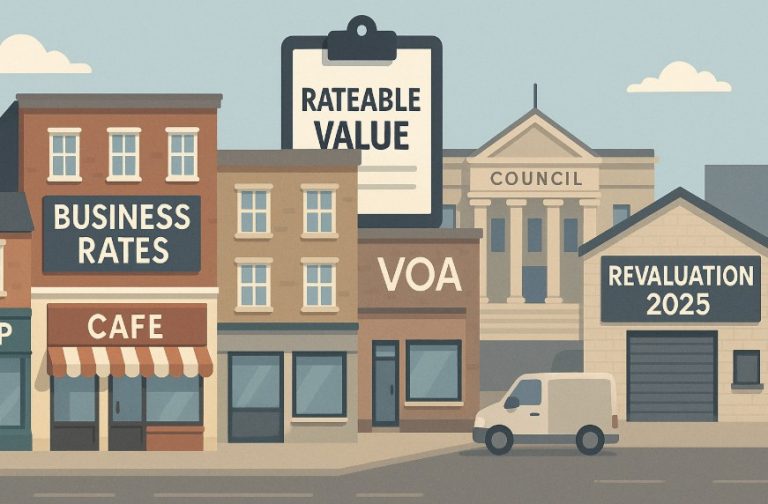HMRC Interest Rates Update: What UK Startups Need to Know After the Latest Bank of England Rate Cut?
Have you ever wondered how closely HMRC’s tax interest rates follow the Bank of England’s base rate? Or why even a small shift in monetary policy can directly affect your late tax payments or repayments from HMRC?
With the latest Bank of England rate cut announced earlier this month, HMRC has confirmed changes to its own interest rates that UK startups and small businesses need to take note of.
On 7 August 2025, the Bank of England Monetary Policy Committee lowered the base rate from 4.25% to 4.00%. As HMRC interest rates are linked to this base rate by legislation, this move has triggered a corresponding adjustment.
The new rates apply from 18 August 2025 for quarterly instalment taxpayers and 27 August 2025 for all other taxpayers.
For entrepreneurs and startup founders, understanding these changes is essential, as they directly impact your cost of borrowing from HMRC (when paying late) and the compensation you might receive if you have overpaid tax.
When Do the New HMRC Interest Rates Take Effect?

The implementation of the revised interest rates is staggered to reflect different types of taxpayers.
- 18 August 2025: Changes apply for companies paying Corporation Tax through quarterly instalments.
- 27 August 2025: Changes apply for all other non-quarterly instalment taxpayers.
This ensures consistency across the system while allowing HMRC to manage the transition smoothly. For businesses already budgeting for instalments, this provides clarity on when to expect the new charges or entitlements to apply.
How Are HMRC Interest Rates Determined?
HMRC’s interest rates are not arbitrary; they are set in law and follow a simple structure that ties them directly to the Bank of England base rate.
- Late payment interest is calculated at base rate + 4.00%.
- Repayment interest is set at the base rate – 1.00%, but never lower than a minimum floor of 0.5%.
This framework ensures that the cost of paying late is always higher than the compensation HMRC provides when a repayment is due.
The rationale is twofold: to incentivise taxpayers to meet deadlines and to align with commercial practice, where borrowing costs are always greater than deposit rates.
The difference between the two rates also mirrors international tax authority policy, reinforcing the idea that prompt compliance is beneficial, while still providing fair redress for taxpayers who have overpaid.
Here’s a simple comparison for clarity:
| Interest Type | Previous Rate (Base 4.25%) | New Rate (Base 4.00%) | Formula Applied |
| Late Payment Interest | 8.25% | 8.00% | Base + 4.00% |
| Repayment Interest | 3.25% | 3.00% | Base – 1.00% (floor 0.5%) |
Why Do These Changes Matter for Startups?

For startups and growing businesses, cash flow is often the most pressing financial concern. Even small differences in interest rates can alter how much you owe or how much you are entitled to reclaim.
If your business pays tax late, the reduction in late payment interest from 8.25% to 8.00% provides only modest relief. While the cut means slightly lower costs, the rate is still steep enough to act as a deterrent against late payment.
For founders juggling expenses, this underlines why prioritising HMRC payments remains crucial.
On the other hand, for businesses that have overpaid tax and are waiting for repayments, the reduction in repayment interest from 3.25% to 3.00% means less compensation from HMRC.
While this reflects the broader monetary environment, it highlights the importance of accurate tax reporting. Overpayments should ideally be avoided rather than relied upon as a source of short-term returns.
How Should Startups Respond to the Rate Adjustments?
The key takeaway for founders is not just the headline rate cut but what it signals for financial planning. These changes serve as a reminder to integrate HMRC obligations into broader cash flow management.
- Pay on time where possible: Even at 8.00%, late payment interest is costly and can quickly add up. Allocating funds for tax in advance helps avoid unnecessary expenses.
- File accurately: Overpayments may feel like a cushion, but they tie up funds that could be used to grow your business. With repayment interest now at 3.00%, the financial benefit is limited.
- Track base rate changes: As HMRC rates move in step with the Bank of England, staying informed about monetary policy decisions can help anticipate future changes in your tax liabilities.
Startups should also consider working with accountants or advisors to factor these adjustments into their financial forecasts.
For many, the difference of a quarter percentage point may not seem dramatic, but over time, especially with larger tax bills, it can have a noticeable effect.
What Does This Signal About the Wider Business Environment?
This update underscores the close connection between UK monetary policy and tax administration. For startups, it demonstrates how broader economic shifts filter down into practical day-to-day financial realities.
A lower base rate typically signals efforts to stimulate the economy by reducing borrowing costs. However, HMRC’s system ensures that while repayment rates drop in line, late payment penalties remain high enough to encourage compliance.
In effect, the system protects the integrity of the tax framework while providing some relief in line with macroeconomic changes.
Startups should view these developments as a signal to remain agile, adapting financial strategies as interest rates move, and ensuring compliance is at the core of their business operations.
FAQ
What are HMRC interest rates?
HMRC interest rates apply to tax payments they charge interest on late payments and pay interest on overpayments, linked to the Bank of England base rate.
When do the new HMRC rates take effect?
The revised rates apply from 18 August 2025 for quarterly instalments and 27 August 2025 for all other payments.
How is late payment interest calculated?
Late payment interest is set at the Bank of England base rate plus 4.00%.
How is repayment interest calculated?
Repayment interest is set at the base rate minus 1.00%, with a minimum floor of 0.5%.
What are the new HMRC interest rates after the cut?
From August 2025, late payment interest is 8.00% and repayment interest is 3.00%.
Why are late payment rates higher than repayment rates?
The higher rate for late payments encourages timely tax payments, while the lower repayment rate ensures fair compensation without encouraging overpayment.
Why do these changes matter for startups?
Even small rate changes affect cash flow. Paying late becomes slightly less costly, but still expensive, while repayment interest drops so accuracy and timeliness are key.







